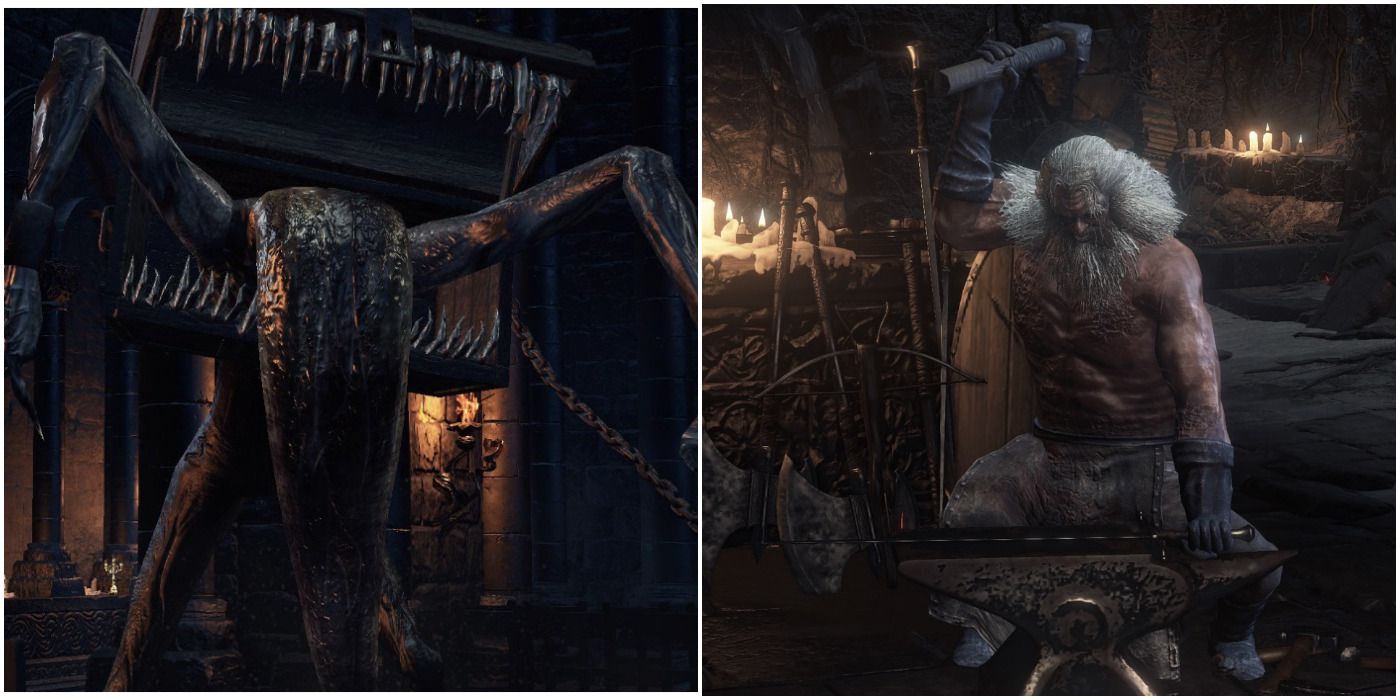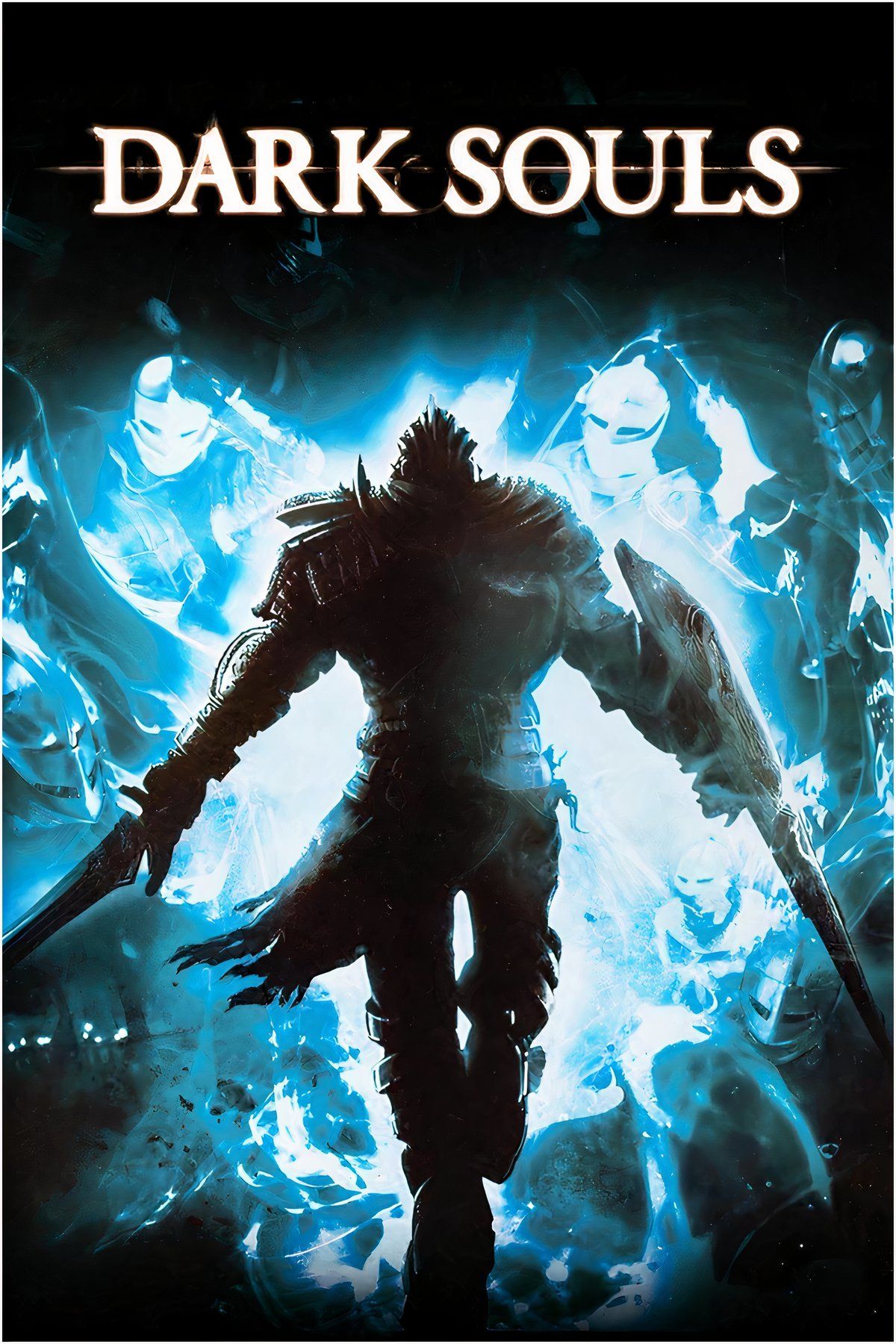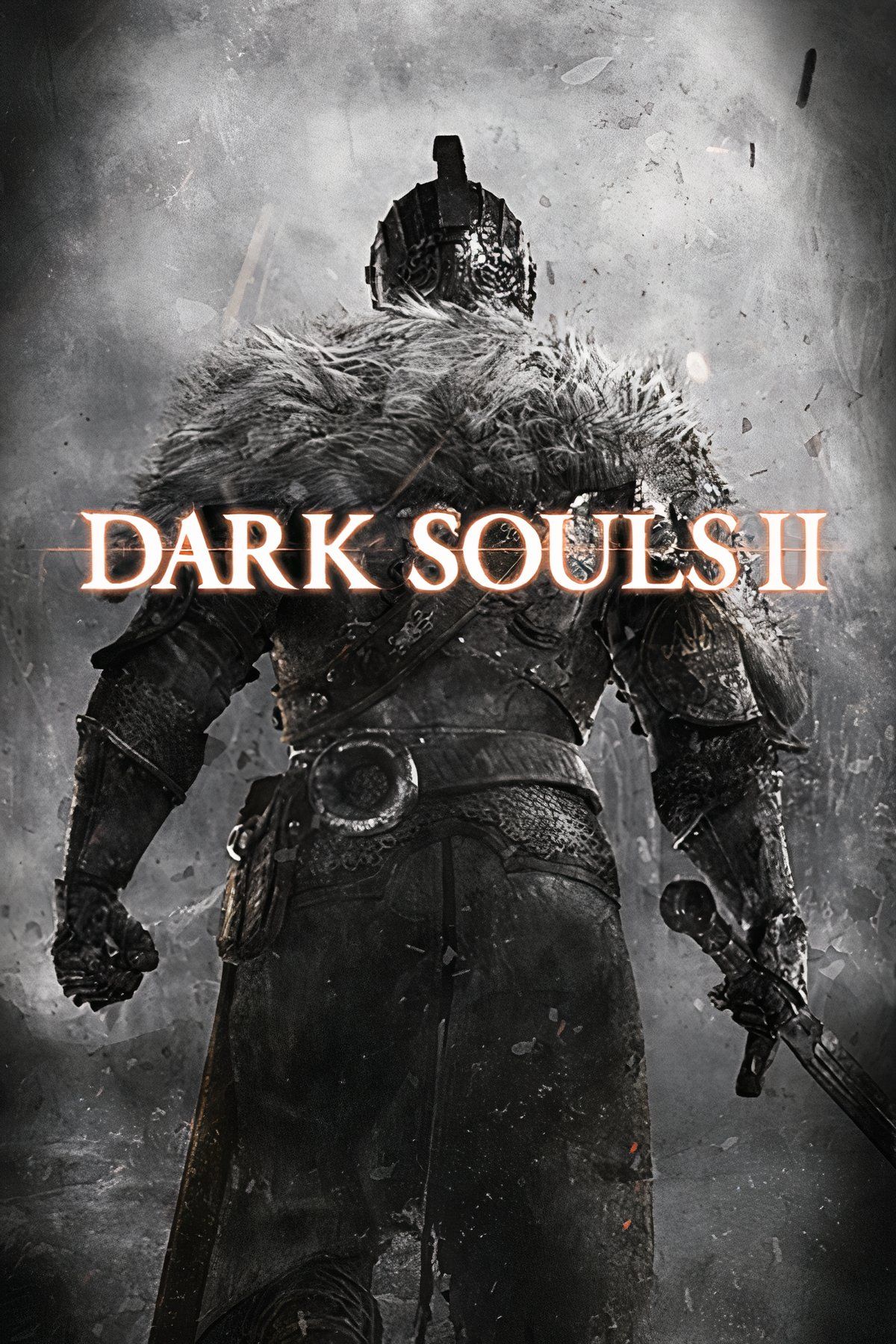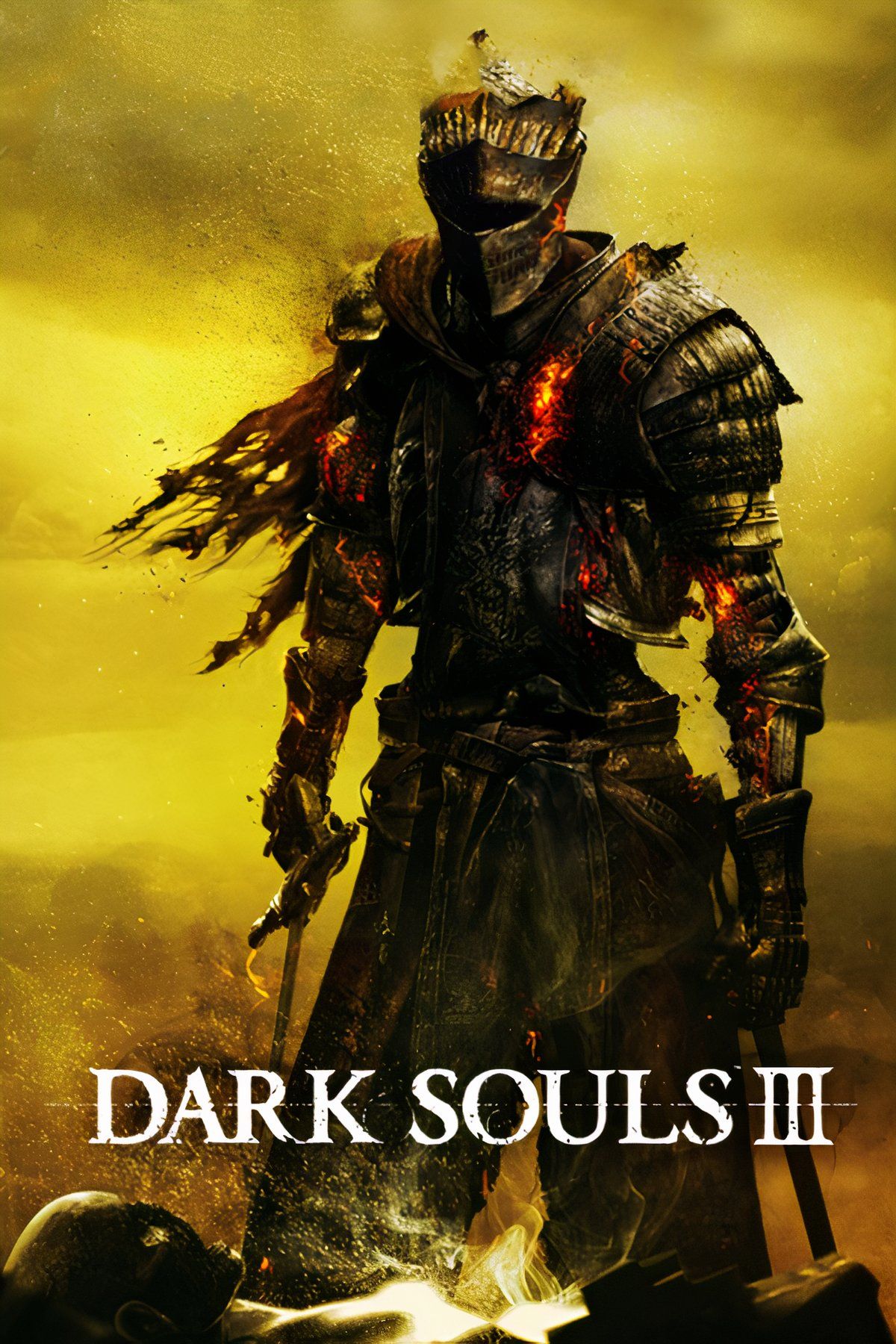Summary
- Seath The Scaleless helped overthrow dragons only to become a tyrant.
- Nashandra refuses to acknowledge anyone more powerful than her.
- Aldia seeks to break the Undead Curse but becomes a cruel academic.
Every Dark Souls fan is well aware of the rich and vivid cast of characters that populate FromSoftware’s apocalyptic fantasy worlds, and it’s very rare that any of them are wholesale good guys. In fact, some Dark Souls franchise NPCs are awful people with tragic and hypocritical backstories.

Related
Dark Souls: 8 Most Emotional Battles In The Trilogy, Ranked
The tragic lore of these boss battles, paired with mournful music, has made them some of the most emotional fights in the Dark Souls trilogy.
Whether it’s lords tasked with reviving the world but are too scared to do it out of fear of death or betrayers of their own kind who become the very thing they hated, there are plenty of massive hypocrites in the Dark Souls franchise.
8
Seath The Scaleless
The Great Betrayer
- Appears in Dark Souls.
- Found in the Duke’s Archive and the Crystal Cave.
- Known as “White Dragon Seath” in the original Japanese version of the game.
In the ancient days of Dark Souls lore, dragons ruled over the world with an iron fist. However, Gwyn, the Lord of Cinder, decided to rebel against the rule of dragons, but he faced the problem of stripping the ancient dragons of their immortality. Enter Seath, the betrayer dragon, one of the most evil characters in the franchise.
Seath revealed to Gwyn that the dragon’s scales were key to their immortality, and those scales could be stripped off with lightning. Seath helped Gwyn win the war and usher in the Age of Fire, but in his pursuit of knowledge, Seath became a reclusive academic who tortured the people of Lordran, becoming just as tyrannical as the dragons he once helped overthrow.
7
Nashandra
Poisonous Whispers
- Appeared in Dark Souls 2.
- Found in the Throne of Want and Drangleic Castle.
- The personification of Manus of the Abyss.
In most Dark Souls games, the final boss is telegraphed well in advance, but in Dark Souls 2, Nashandra is the seemingly good Queen to the maddened King Vendrick, who emerges in a grim reaper-like form to stop the player as the final boss.
In the game’s lore, Nashandra, the reincarnation of Manus from the original Dark Souls, sees herself as the true inheritor of the Throne of Want to usher in a new age, deeming only the most powerful survive, but in the process, she refuses to let the player character, who becomes more powerful to her, to assume the throne. For a transparently irredeemable character, Nashandra still can’t acknowledge that someone else could be more powerful than her.
6
Aldia, Scholar Of The First Sin
The Academic Bubble
- Appeared in Dark Souls 2.
- Found throughout the game and finally at the Throne of Want.
Aldia is one of the most beloved and interesting characters in all of Dark Souls, and that’s for good reason. Primarily seen in the DLCs of Dark Souls 2, Aldia is the brother of King Vendrick. He had little interest in ruling and instead wished to determine the exact nature of the Undead Curse so that it could be undone, and the world could break free from its cycles of reincarnation.

Related
Dark Souls: 8 Most Unusual Bosses In The Trilogy, Ranked
Not all Dark Souls enemies stick to a specific formula; here are some of the most unusual bosses featured throughout the trilogy.
However, Aldia also believes himself to be an educated scholar who is trying to save humanity, but in the process, he tortures and experiments on the people of Drangleic in his secluded estate. He is a cruel academic who refuses to see any other perspective as correct, ultimately proving to be a great, compelling villain.
5
Lothric and Lorian
The Princes In The Tower
- First appeared in Dark Souls 3.
- Found at the very top of the Grand Archives.
The world of Dark Souls 3 is tired and apocalyptic, endlessly rebooted with diminishing returns until, finally, the Lords of Cinder are designated to lay down their lives to link the flame yet again. However, the Lords of Cinder (who are full of interesting facts and tidbits) abandon their post as the world rots away, and it’s the player’s job to hunt them down and bring them back to Firelink Shrine to be burned.
Lothric and Lorian are the twin princes who were brought up in an entire culture dedicated to linking the flame, with Lothric in particular being a result of constant tampering with the bloodlines of the world’s rulers to breed a Lord of Cinder. Yet, the Lord of Cinder refuses to go to the post that defines his power, resisting the player at every step.
4
Pontiff Sulyvahn
The Unholy Figurehead
- First appeared in Dark Souls 3.
- Found in Irithyll of the Boreal Valley.
In a lore dominated by tyrants, murderers, and psychopaths, Pontiff Sulyvahn has the dubious distinction of being one of the most morally corrupt characters in all of Dark Souls. The so-called holy man used the discovery of the Profane Flame to build a religion where he could experiment to his heart’s content and feed Aldrich the Devourer as a result of his own ambition.

Related
Dark Souls 3: 10 Intriguing Things You Need To Know About Irithyll Dungeon
One of the most interesting dungeons in Dark Souls 3 is the infamous Irithyll Dungeon of the Boreal Valley. Here’s what you need to know.
The world of Dark Souls 3 is dominated by characters unable to accept the end of all things, and Pontiff Sulyvahn uses cruelty, brute force, and manipulation to keep a hold on his power. He is a massive hypocrite considering the holy robes he dressed himself in where Irithyll could have stood as a sanctuary for the poor people of the world, not their doom.
3
Darkstalker Kaathe
The Void Serpent
- First appeared in Dark Souls and mentioned in Dark Souls 3.
- Found in the Abyss.
Of all the strange creatures that inhabit the world of Dark Souls, none are so strange, disconcerting, and potentially sinister as the primordial serpents that stalk the lands, constructing elaborate plans to bring an end to the Age of Fire and usher in the Age of Dark.
Kaathe is a sweet-talker who flatters the chosen undead, using the promise of the Age of Dark as something that is necessary. However, the Age of Dark is also heavily implied to be a world wherein the primordial serpents like Kaathe would rise to power. Kaathe is a hypocrite because he pretends that the Age of Dark is in the best interest of humanity, when he really thinks that it’s likely fueled by a desire for the unchecked power of Gwyn, the man he seeks to dethrone.
2
Gwyn, Lord Of Light
The King Who Never Let Go
- First appeared in Dark Souls.
- Found in the Kiln of the First Flame.
- Called “Gwyn, King of Kindling” in the Japanese version of Dark Souls.
Some characters are so totemic in Dark Souls lore that their reputation breaches the game itself and leaks over into its sequels. Gwyn is an essential character full of hidden lore, the instigator of the rebellion against the dragons, and the Lord who brought about the Age of Fire, which he reigns supreme over as a so-called benevolent leader of mankind.
However, the world is sick in Dark Souls, embodied by the Undead Curse, but Gwyn refuses to let the Age of Fire die. Doing so means he would be superseded by a human Dark Lord to usher in an Age of Dark. So, despite his supposed benevolent leanings, he casts the world in a miserable apocalypse because he is too scared to accept a world different from the status quo.
1
Patches
The Returning Reprobate
- First appeared in Dark Souls and reappears in Dark Souls 3.
- Found all over the place but usually near Firelink Shrine.
- Also known as ‘Trusty’ Patches.
If Gwyn represents the noble hypocrite, then Patches is on the exact opposite side of the scale. He is unapologizing hypocrite who lies with every sentence and is willing to say whatever he likes in order to get what he needs.
Patches is defined by a simple cynicism of the world where he will attempt to trick, kill, and otherwise destroy anyone who treats him with kindness. When he’s confronted about his behavior, he inevitably begs for forgiveness, even though it’s not earnest. Patches is bare-faced hypocrisy personified, which is a large reason why he’s so beloved among the fans, as he shows up across the majority of FromSoftware games.
-

- Released
-
September 22, 2011
- ESRB
-
M for Mature: Blood and Gore, Partial Nudity, Violence
-

- Released
-
March 11, 2014
- ESRB
-
T for Teen: Blood and Gore, Mild Language, Partial Nudity, Violence
-

- Released
-
March 24, 2016
- ESRB
-
M for Mature: Blood Violence











Leave a Reply